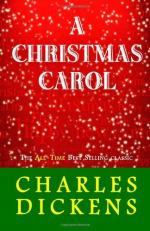|
This section contains 19,001 words (approx. 64 pages at 300 words per page) |

|
SOURCE: “Dickens Time and Again,” in Dickens Studies Annual, Vol. 2, 1971, pp. 163–96.
In the following essay, Patten examines the sudden conversion of Scrooge, contending that it is related to the surge in popularity of religious tracts during the 1840s.
My purpose was, in a whimsical kind of masque which the good humour of the season justified, to awaken some loving and forbearing thoughts, never out of season in a Christian land. I have the happiness of believing that I did not wholly miss it.
—Charles Dickens, Preface to the Cheap Edition, Christmas Books1
Justly admired though his essay on “Dickens: The Two Scrooges” is, Edmund Wilson surely does not reflect the response of most readers of A Christmas Carol when he posits that Scrooge's conversion is temporary. For Wilson, the melodramatic dual world of early Dickens included only two types of characters, good and bad. Scrooge embodies both types...
|
This section contains 19,001 words (approx. 64 pages at 300 words per page) |

|


